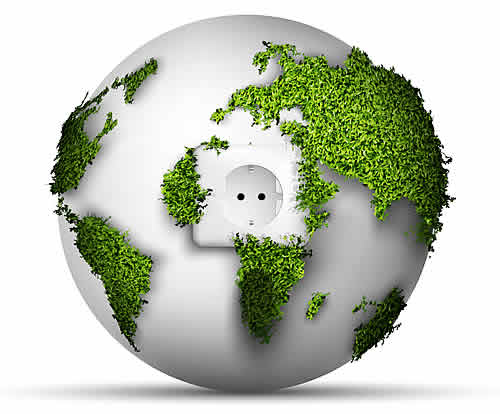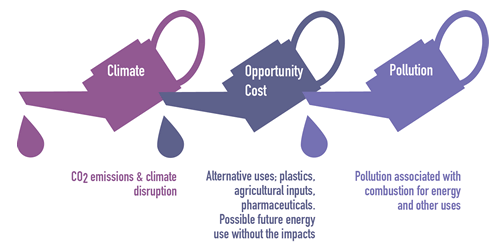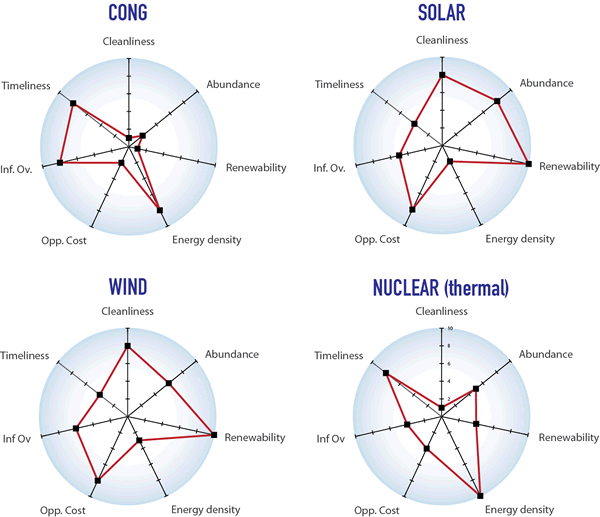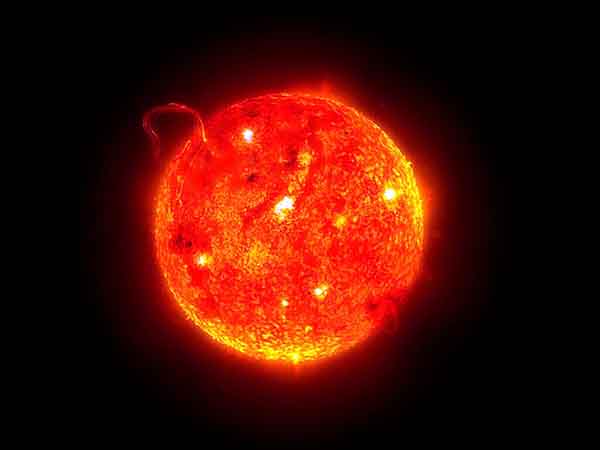“The energy–matter world, which is also part of the economic system, has been given little, if any, attention.”
R Kummel
Sustainable Energy, like progress towards sustainability in anything else, inevitably requires significant changes in both the way that we do things and in the things that we do – affecting our industrial production, social infrastructure and value systems. Energy lies at the heart of almost all of this. In fact, developing clean energy would help unblock many obstacles on the path to a sustainable future.
Is sustainable energy efficiency only an issue in an unsustainable world?
Much thinking on sustainable energy has focused upon the efficiency of its use – measuring the extent to which energy intended to undertake work is ‘employed’ effectively in doing that work and whether a required outcome might be achieved with less energy.

New approaches to assessing this effectiveness are an increasing focus of effort and attention. These include Net Energy Analysis and its economic counterpart Energy Return on Energy Invested (EROEI), while Exergy concentrates upon assessing the quantity of useful energy available to undertake work and Emergy is the amount of Exergy employed directly or indirectly to produce a product or a service.
Efficiency of use is clearly a critical consideration for the sustainability of energy, where energy might be scarce, expensive or polluting. However, the ‘quality’ of sustainable energy is also a critical dimension. If the impacts, costs and wider social and environmental externalities which arise thorough our current use of energy could be radically reduced or even reversed through the use of ‘truly sustainable’ energy, then would the amount used become far less relevant?
In previous posts, we have explored new dimensions of energy quality and suggested the need for prioritising ‘Real-time energy’ (energy which passes from origin to use relatively quickly and with few thermodynamic losses) over prehistoric sources – while also considering the opportunity costs of using fossil fuels.
In this post we further explore those characteristics of energy utility and performance which should be considered in order to define truly sustainable energy.
Sustainable Energy – the many dimensions of energy utility
“I admire Homo sapiens’ capacity to follow through on an idea, no matter how it hurts.”
Harry Harrison
Effective utility is a defining characteristic which prioritises and drives the use of particular energy sources. Utility in this context is derived from a mix of high energy density, portability and relative safety (at least if we ignore the pesky externalities).
It is the nexus of these characteristics that makes us so dependent upon CONG (Coal, Oil and Natural Gas). It is concentrated, portable and relatively ‘safe’. Against this combination, renewable energy sources often compare unfavourably, so CONG remains the status-quo energy source of habit and choice.
However, there is an urgent need for change; for us to move away from finite and polluting energy sources, towards those that are capable (through their availability and systemic safety) of supporting human energy needs over the long term. Such perspectives are not only those of environmentalists, mainstream energy organisations such as the International Energy Agency (IEA) also predict a major shift towards renewables over coming decades.
So, just what are the energy characteristics which we should focus upon in order to identify the most useful and sustainable sources?
The key issues can be grouped into 6 dimensions:
- Cleanliness
- Abundance/Scalability
- Renewability
- Energy density
- Opportunity cost
- Infrastructural overhead
- Timeliness
Cleanliness
Considering the whole production and consumption lifecycle, sustainable energy sources should be clean enough to enable long-term use without significant environmental or social impacts.
Probably the most critical consideration of energy performance for sustainability is the relative and (in the long run) absolute cleanliness of using different energy sources. This refers in the widest sense to different environmental and social impacts and therefore looks beyond just CO2 and climate change. CONG sources have high utility (in the short-term) but are highly polluting at all stages of their production and use lifecycle. Renewable sources are inherently cleaner and most operate without generating significant pollution, but they require plant and infrastructure manufacture which currently relies upon fossil-based energy sources and minerals with varied impacts. The long-term waste created by current (light water) nuclear power technology (together with other risks including safety, efficiency and proliferation) makes many environmentalists highly sceptical of its value as a low carbon alternative. Thorium-based fast breeder reactors and the as yet unrealised grail of fusion may go a long way to addressing these issues.
Abundance/Scalability
Sustainable energy sources should be widely available and capable of scaling for widespread use and to meet the significant demands of industrialised societies.
Without getting mired in the peak oil debate, it is clear from first-principles logic that a (more) sustainable energy source would be one based upon an abundant resource rather than a scarce one. This isn’t necessarily a sustainability issue per se but rather one of basic utility. A technology which uses abundant resources is likely to be easier and cheaper to deploy than a technology based upon scarcity. If we want to build sustainable societies we need energy sources that will be available over the long-term to support renewability (see below) and be sufficiently abundant or widespread. First generation renewable energy sources such as hydro, biomass and geothermal rely upon the relatively local abundance of relevant resources.
Renewability
Sustainable energy sources, by definition, should be viable over the long-term.
A vital characteristic of sustainable energy, renewability refers to the ability of the source to continue providing energy. In practice this can be seen as providing adequate abundance in real time. This effectively rules-out sources with limited supplies or restricted access.
A renewable source might not be entirely clean, but it has to be clean enough to avoid long-term impacts that would preclude its use at scale over time.
Density
Energy sources with high densities are inherently more useful, particularly because we have developed high power demands in industry and society. In the long-run we need to adapt our systems and technology to accommodate lower power, intermittent, sustainable sources.
Energy density refers to the effectively useful or extractable energy per unit mass (specific energy) or volume. The energy density of a source tells us a lot about its utility (although utility is highly context related). The high energy density of CONG sources is the key reason why they are so useful. We can fill a car with a tank of fuel and gain a 400/500 mile range, whereas most electric cars are currently still struggling to provide a range of much more than 100 miles, giving rise to ‘range anxiety’ even though the average journey length (in the UK at least) is perhaps only 8.5 miles (UK DfT 2010).
Energy sources are inextricably related to industrial and technological infrastructure; the “highly concentrated nature of these energy sources is a fundamental enabling factor in relation to the forms of social and economic organisation that have evolved over the course of the industrial age” (Josh Floyd, 2012) but such an interrelationship also gives rise to significant risks and vulnerabilities. High density energy infrastructure drives structural coupling and vulnerability to interruptions in supply.
| Material | Energy type | Specific energy (MJ/kg) | Energy density (MJ/L) |
| Uranium (in breeder) | Nuclear fission | 80,620,000 | 1,539,842,000 |
| LPG (including Propane / Butane) | Chemical | 46.4 | 26 |
| Gasoline (petrol) / Diesel / Fuel oil | Chemical | ~46 | ~36 |
| Fat (animal/vegetable) | Chemical | 37 | |
| Coal | Chemical | 24 | |
| Carbohydrates (including sugars) | Chemical | 17 | |
| Protein | Chemical | 16.8 | |
| Wood | Chemical | 16.2 | |
| Lithium-ion battery rechargeable | Electrochemical | 0.36 – 0.875 | 0.9–2.63 |
| Lead-acid battery | Electrochemical | 0.17 | 0.34 |
Source Wikipedia – Energy density
An initial look at energy density suggests that renewable sources (with the exception of biomass) do not perform well in these terms. However, we need to consider utility on a more equivalent basis. CONG energy sources are inherently stock-based (the energy source is the stock, once it is burnt the total quantity of stock is reduced) and, by their nature, renewables are mainly flow or ‘real time’ based (the energy source is generated by activity but the activity itself is not diminished). Nuclear energy sources are of the highest density and also offer the ability to ‘plug-in’ to existing infrastructure.
Opportunity cost
There are important non-energy uses of fossil fuels and other potential opportunity costs of other sustainable energy sources.
Using stock-based energy sources such as fossil fuels has a range of well-known environmental impacts. However, the opportunity costs of use are given far less attention. Modern society relies upon petroleum-based products for making plastics, pharmaceuticals and agricultural inputs. There are also likely to be (currently) unknown future uses.

A number of current and possible alternatives exist for these uses but conservation of stocks to support non-energy applications is likely to be important. Their use could be made more sustainable through the development of closed-loop production and use cycles to maintain the availability of useful long-chain polymers.
There is also a range of possible opportunity costs for sustainable energy sources that should be considered within a production and use lifecycle, and in assessing benefit and impact trade-offs.
Infrastructural overhead
When different energy sources are compared, a lifecycle approach should be used that also accounts for the infrastructure required to manufacture plant and the supply/distribution networks necessary for utilisation.
The infrastructural overhead (after/ inspired by Josh Floyd – see link above) refers to the relative size, complexity and impact of the infrastructure required to support the generation and/or distribution of energy. For example, petroleum offers a convenient high density energy source for powering vehicles or generators, often in very remote locations. However, it requires a global infrastructure to extract, refine and transport it. In contrast, wind turbines or solar PV don’t require additional ‘fuel’ and a supply infrastructure to service them. They do, however, have an initial material and manufacturing overhead and (in current centralised grids) require a power distribution network, with the inclusion of storage to provide smoothed supply characteristics.
Timeliness
Different energy sources apparently offer power availability instantly or intermittently. While this is often a characteristic of the source it is also an aspect of the technical ecosystems which support it.
Timeliness is a contextual measure of importance for assessing utility. It relates to both supply and demand. The modern world has developed a socio-cultural-infrastructural model that relies upon instant availability and has a dependence upon high-density energy sources. National electricity grids provide always-on power supply that requires large scale generation which is maintained 24/7 and frequently has to provide a base-load capacity. As we have become accustomed to this model, and built industrial and social models which rely upon it, changing to different systems that may be intermittent and/or discontinuous in their supply presents a number of challenges and the need for adaptation.
How to assess sustainable energy?
Using the characteristics above it is possible to visually explore the characteristics of different sources. This is illustrated in the radar diagrams below by assigning a relative score for each criterion for a given source. The ‘perfect’ sustainable energy source would look like a full circle.
It is important to emphasise that these scores have been estimated for conceptual/illustrative purposes – they are not data-based so please don’t assume great accuracy or total objectivity! (However, observations and comments are welcome).
Interpreting the charts
The charts illustrate how well renewables score on important sustainability characteristics but also show that their utility in terms of energy density and timeliness is less good (in current terms) than CONG or nuclear.

Scored 0-10 where 10 is sustainable on a relative & arbitrary scale. Assuming current starting point. (Graphic revised 11/02/2015 for Nuclear decreasing Inf Ov score and increasing Abundance score – to reflect a more balanced assessment).
Production, use and demand – moving towards a sustainable energy future
“Everything is the way it is because it got that way”
D’Arcy Wentworth Thompson.

Production and demand issues are heavily dependent upon the infrastructural ecosystem we have developed. This has been shaped by the relative abundance of CONG energy sources and their high density values. When renewables are assessed against CONG as direct replacements we have immediate problems – they are not ‘always on’ (but conversely not always burning fuel) and they can lack the energy density or power needed as direct replacements. Moving away from this towards an ecosystem based upon renewables will require far reaching and iterative changes in the way we provide and use power, and most likely a far higher level of differentiation between uses and the systems that support them than we have in place at present.
As an example, we may have industrial systems that require and are provided with high quantities of continuous power, but this could be provided as a function specific to this use. Domestic energy requirements may be met separately through multiple systems; space and water heating provided by solar with or without short term interim smoothing-storage. Short-term high power needs such as cooking could be met through dwelling-specific battery or flywheel storage, pumped storage or via larger local/neighbourhood flow batteries. There is also scope for the further development of stock-able renewables (e.g. biomass, ethanol, hydrogen etc.) which would help moderate supply and distribution issues.
Energetic evolution
“The hand of change rests on it all, unfelt, unseen; resting for a while, as it were half reluctantly, before it grips and ends the thing forever. One frost and the whole face of things will be bare, links snap, patience end, our fine foliage of pretences lie glowing in the mire”
H G Wells
Sustainable sources that deliver on the crucial criteria of cleanliness and renewability present challenges to the way we currently use energy because of their relatively low density and intermittent supply. Nuclear lies somewhere in-between, with many environmentalists split by the philosophical watershed of whether it is safe and clean enough to contemplate. Further developments in Thorium-based reactors (or even fusion) could help swing the argument further in its favour – but the public is wary of the risk. It may have a role in the transitionary phase we should now be in – of moving from our current infrastructural position to a future longer-term and sustainable position.
In the long-term a major part of the sustainable solution lies in making better use of lower density, lower power demand and more discontinuous supplies. Some existing and predicted technologies such as biomass and algae fuel already do so (plants can grow when conditions permit, slowly aggregating biomass, proteins and sugars as they go). Breakthroughs in battery technology will ease the way to storage of renewable electricity and provide the means to ramp up grid supply and power homes and businesses whose space and water heating is met by solar or heat source pumps.
In addition, we have yet to scale the use of renewable energy as an input to the production of other forms of energy. For instance, the generation of hydrogen (which has energy density and portability characteristics on a par with CONG) might be undertaken cleanly and affordably, through the use of solar furnaces, just as they could help with turning air into rocket fuel.
As an essentially flow-based resource, renewable energy will require a substantial re-think of how we generate and utilise energy. In turn this demands a reconceptualisation of how we need, obtain and supply energy from both the supply and demand sides, in concert with innovation to make best uses of the potentially unlimited opportunities they offer.
The chance exists for us to develop systems of energy production and safe use that rely upon abundant supply. We should not allow the inertia of convention to prevent us from imagining and building a sustainable energy future.
Interested in sustainable energy? Let's chat.
Talk to our sustainability consultants
 Discounting the discount rate…how can we value a sustainable future?
Discounting the discount rate…how can we value a sustainable future?
Leave a Reply